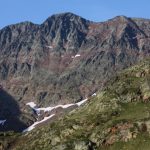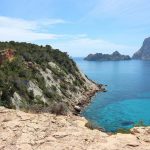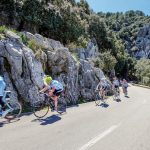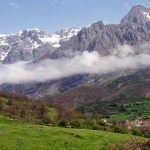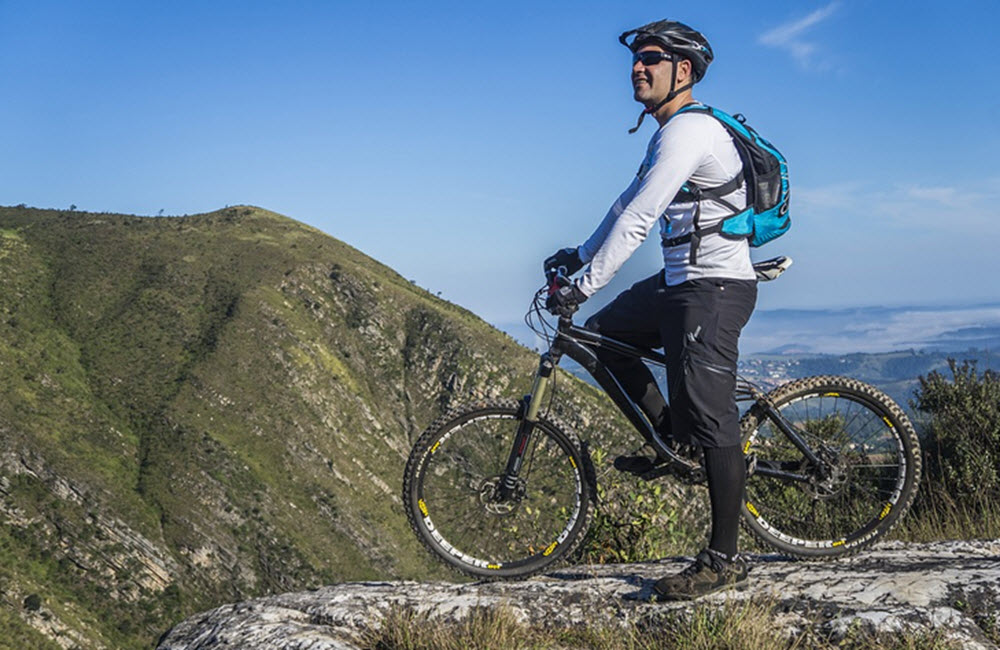Mountain bike in Alicante province
ave you ever tried to drive along the road from Castell de Castells to Guadalest, or from Sella to Benifato? All these villages are linked directly with official roads, but you’d be a brave person to try driving them in any thing less than a 4 X4. The realization would have hit you that some of the smaller roads in this area aren’t really roads at all! They’re mountain bike tracks!
What makes Spain so exceptional for biking is the size of the country, the relatively small population, and the fact that it is the second most mountainous country in Europe. The minor roads linking the smaller villages are what you’re looking for, they are usually marked with either, white and yellow or red paint marks at junctions to ensure you take the right fork.
For every kilometre of good tarmac road there must be ten kilometres of good dirt track, and double again of narrow, boulder and root-strewn single track. Most of these are public access roads and paths or forestry roads with no access restrictions. Even if you do find yourself at someone’s front door by accident you’re most likely to be regarded with curiosity than anything else.
But be warned, if you’re hurtling down a track for the first time there may be a chain barring your escape at the bottom. Gravel rash, a buckled wheel and a long walk are the usual results! What often catches cyclists off-guard are what appear to be “diagonal sleeping policeman” across the dirt roads at various intervals, these are actually drainage systems. But they do make brilliant jumps on the steep track sections. The ruts cut out by the heavy rain that tend to surround these humps usually lead you off the track and into big trouble.
Another potential pitfall, and one that is very difficult to avoid on a mountain bike, are the processional caterpillars, they prefer to nest in the younger pine trees. The nests are white but after time they go brown which makes them almost impossible to spot and they stay toxic to five years. If you’re stung the result is usually just itching for a few days but the infected area can start to blister. Apply an anti-histamine cream and protect from sunlight.
Last year whilst cycling on top of Mt Ponoch over looking Polop, I had a brush with one of Spain’s most formidable and thorny plants. It punctured various soft bits and both tires leaving a long and bloody walk back to the car at the Casa Fefugio near Sella. It’s well worth carrying two spare inner tubes and a pump, and a puncture repair kit for yourself.
I’ve been off-road cycling in this area for four years, and have found the only reliable way to explore which are good tracks and which are not, is to get on your bike! Late last year, having received information that there was a good path, I tried to cycle over the Sierra Helada: a five-mile bike carry doesn’t half make your arms ache! The maps of the area are old and can only be accurately relied upon to give relief information.
So maybe it would be best to go cycling with a club. Most clubs are informal and the best way to find the nearest is to ask at your local maintenance shop. Bikes n Hikes of Finestrat run a down hill tourist excursion, and the Costa Blanca Climbing Club also has a number of keen mountain bikers, they can be reached on 96 587 86 00 and 68 604 40 03 respectively.
A good quality “hardtail” is a minimum standard, but a mid range full suspension will ensure you get the most out of your days riding. Brakes and tyres are your next consideration, “V Brakes” are very good, inexpensive and easy to maintain. The new disc brakes are even better, but you pay for it by a weight increase and maintenance is difficult. Directional tyres on the front, for those scary down hill moments, and power knobblies on the back for hill climbs. A good set of tyres makes all the difference and is safer, even if you do sound like a Landrover coming down the road!
What to wear is as important as the bike. A helmet and a good pair of padded shorts, as suspension can only do so much, sunglasses will also help protect from flying dirt and juicy bugs. I highly recommend a hydration pack, usually a four-litre rucksack containing two litres of an isotonic drink, which can be drunk though a straw, so you don’t have to stop, or take your hands off the bike. Other essentials should include; mobile phone, food, money, spare inter tubes, some sticky tape and dressing, and a multi tool containing allen keys and various screw drivers, I’ve also started carrying spare brake cables.
Depending on your fitness and riding ability distances covered vary from just a few kilometres to fifty or sixty. Longer rides really need a little forethought. Running out of water is no fun, and two litres sounds a lot, but on longer rides I can get though three bags. Most villages have fonts so plan water stops at regular intervals.
Finding new areas to explore on a bike isn’t too difficult – use any map and a pin, be adventurous! The smaller villages are trying hard to promote inland tourism, and most now have wooden mounted walking maps situated in obvious places, with brief descriptions and distances. Trying to remember these maps is fun so take notes. Books about walking in this area are plentiful and provide a useful source of information. It’s a fantastic way to explore inland, and you’ll be amazed at what you’ll find.

